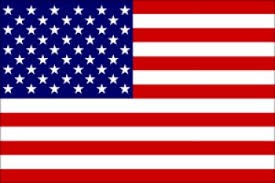HEVELYSE MUNISE CELESTINO DOS SANTOS
Título da Dissertação: SUPLEMENTAÇÃO DE SEMENTE DE PERILA (Perilla frutescens) COMO FONTE DE ÁCIDO GRAXO ÔMEGA-3 EM DIETA PARA TILÁPIA DO NILO
Orientador: Prof. Dr. Ricardo Pereira Ribeiro
Data da Defesa: 25/10/2011
RESUMO GERAL
INTRODUCTION: The Nile tilapia (Oreochromis niloticus) is a fish of great current interest in fish farming, and the second group of freshwater fish cultivated over the world, behind only the carp. Freshwater fish such as Nile tilapia normally present low concentrations of n-3 VLC-PUFA content, including compared with sea fish. This aspect is related mainly the different food between the species and physiological changes. In freshwater fish, linoleic acid (LA, 18:2n-6) and alpha-linolenic acid (LNA, 18:3n-3) are metabolized by the same sequential desaturation and elongation enzyme systems, which results in the production of long-chain PUFA n-3 and n-6 series. Perilla frutescens is a plant that belongs to the Lamiaceae family native to Asia, whose seeds are a traditional source of oils produced in Korea, India, China, and other Asian countries. Its oil has the highest proportion of alpha-linolenic acid (LNA) among the vegetable, representing approximately 60% of its total fatty acid content. Thus, supplementation of perilla seed in the diet of tilapia becomes an alternative to improve the concentration of n-3 PUFA in muscle tissue.
AIMS: This study evaluated the effect of dietary supplementation of perilla Nile tilapia on the fatty acid composition of muscle tissue as a function of feeding time length. MATERIAL AND METHODS:
Were used 400 Nile tilapia (Oreochromis niloticus) with initial live weight 245 ± 10.96 g, distributed in eight net cages. The tilapia received for 60 days a diet with perilla seed ground (5%) and one control, with soybean oil. At the beginning of the experiment and every 15 days were analyzed the composition of proximal muscle
tissues of tilapia and quantification of fatty acids (mg / g total lipids) by gas chromatography.
RESULTS AND DISCUSSION: Among the experimental diets and during the feeding period, the values of total lipids in muscle tissue of tilapia did not differ (p> 0.05). The fatty acid composition of muscle tissue of tilapia was affected by diet. According to the quantitative analysis of fatty acids, were observed an increase in n-3 PUFA, especially the LNA during feeding with the diet supplemented with perilla, proving the influence of diet on the lipid composition of fish. The n-6/n-3 ratio during the period of feeding the diet with perilla has from 11.57 (0 days) to 3.04 within 60 days of experiment.
CONCLUSIONS: Through the inclusion of perilla seed in the diet of Nile tilapia, verified the incorporation of n-3 fatty acids and an improvement in n-3/n-6 ratio. Therefore, supplementation of perilla contributed to raising the nutritional quality of the total lipids of muscle tissue of Nile tilapia.
Key words: LNA alpha linolenic acid, omega-3, Nile tilapia, Perilla frutescens
Artigos Publicados Vinculados a Dissertação:


